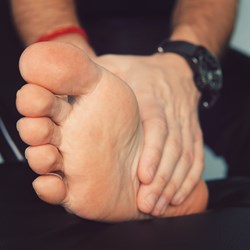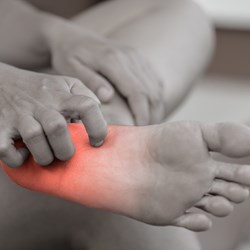Feet
Diabetes puts you at a much higher risk of developing foot problems. Being aware of this will help you look after your feet.
Damage to the nerves can lead to a loss of feeling which means you may not notice an injury or wound to your foot; reduced sweating due to nerve damage can result in hard cracked skin, and foot ulcers can occur. Nerve damage can also, in rare cases, lead to bone and muscle weakness which can change the shape of the foot.
Diabetes can also lead to ‘furring’ up of the arteries, causing reduced blood and oxygen flow to the feet. This can also increase the risk of foot ulcers which means wounds may not heal and can get infected much more easily.
It’s really important to check, wash and moisturise your feet daily, cut or file your toenails regularly; make sure you wear appropriate footwear and treat any minor cuts or blisters immediately. It’s also very important to attend your diabetes foot screening appointment every year. Keeping your blood glucose (sugar) level in the target range will significantly reduce the risk of developing any foot problems.
To find out more about diabetes and feet, register for our Understanding Type 1 online course. There is also a list of additional resources about diabetes and feet below.
Advanced Search
Resource type -
Language -
Type of diabetes -
Some useful advice to help you to look after your feet.
This page gives you advice about wearing the most suitable shoes, taking into account the shape of your feet and your diabetes.
This page gives advice on how to look after a diabetic foot ulcer.
This page gives a brief explanation of the causes and effects of neuropathy.
Diabetes can gradually damage the nerves and blood vessels supplying your feet. This happens so slowly that you may not notice that your feet are less sensitive than they used to be. As your feet are less able to let you know when something is damaging them, it is important to look after them. This…
Your feet are important especially when you’ve got diabetes. If people manage their diabetes well most foot problems, including amputations, can be prevented. You can also dramatically reduce your chances of foot problems by taking good care of your feet.
This leaflet explains the touch the toes test. The touch the toes test is quick and easy, designed to assess sensitivity in your feet, and can be done in the comfort of your own home.
People with diabetes are much more likely to suffer serious foot problems because raised blood sugars reduce circulation and feeling. This damage can lead to amputations. Diabetes is to blame for over 150 amputations in the UK each week. But most foot problems can be prevented. That’s why keeping a…








